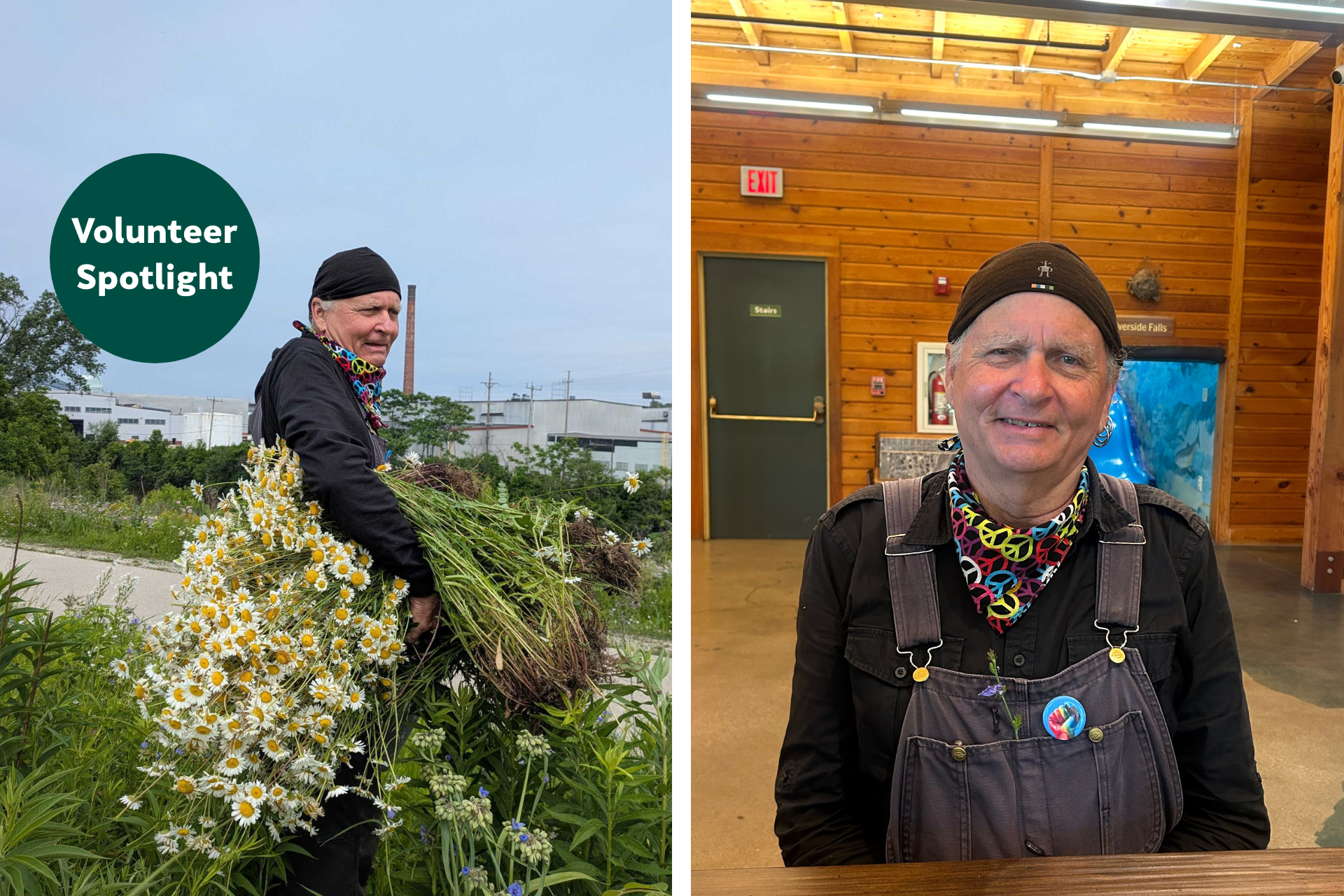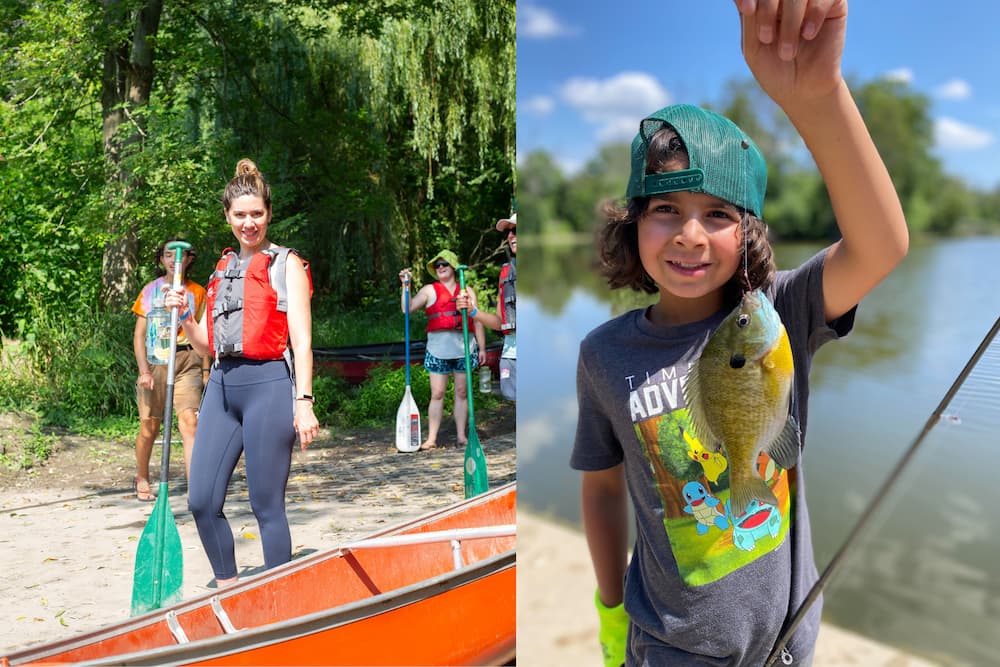Shagbark Hickory – Native Tree Spotlight
Is that tree ok? It looks like its bark is falling off.
Shagbark hickory (Carya ovata) is a native deciduous tree found across the eastern half of the United States. This species is characterized by its “shaggy” bark, which peels away from the trunk in curving plates. Despite its unusual looks, shagbarks are great eco-neighbors.
Active participants in our local ecosystems, shagbarks are often found in association with oaks in oak-hickory forests. The hard outer husk of the hickory nut splits open when it’s ripe, making them particularly desirable to chipmunks, squirrels, rabbits, and mice, as well as many species of birds which forage from the trees in the fall.

However, shagbark hickories are also vital because of the habitat they provide to a more underappreciated neighbor: bats. It has been well-documented that many bat species, including big brown, little brown, silver-haired, and hoary, use shagbark hickory trees as day roosts. The bats crawl up under the curls of bark and sleep there during the day, emerging in the evening to devour thousands of insects per night. Bats prefer roost trees with a larger diameter, meaning that, if we wish to help our local bats, we should protect habitats that foster hickories for long periods of time, allowing them to grow very large. The USDA estimates that bats provide “billions of dollars in ecosystem services annually,” and notes that they are especially important to farmers because they eat insects that would otherwise require costly insecticides to control.
Shagbark hickories take part in the forest phenomenon known as “masting,” when, every two to five years, all of a forest’s trees of a particular species grow a bumper crop of nuts (oaks, pecans, and others also exhibit this behavior). Scientists still aren’t sure exactly why trees engage in this coordinated mass-production of seeds, but some speculate that this behavior may lead to an increased chance of seed survival, as the creatures who eat the nuts may leave more behind in a mast year. This masting behavior has ecosystemic effects for years afterward, often leading to a boom in prey populations such as deer and squirrels, which then reduces again in non-mast years.

Shagbark hickory is also prized by humans for smoking meats. So the next time that you have “hickory-smoked” bacon for breakfast, you may want to thank a shagbark or one of its relatives. The nuts are also edible to humans and are often considered a delicacy as they reportedly taste like a mixture between a walnut and a pecan (both of which are classified in the same family as hickories). But, their hard shells and the slow growth of the tree, as well as competition from wildlife like squirrels and insects, make them difficult to supply commercially, so you probably won’t find them available at the grocery store.
If you’re feeling adventurous, you may want to try shagbark hickory syrup. This syrup is unique because it is not made from the sap of the tree like maple or birch syrup, but rather produced by infusing roasted hickory bark in water and adding sugar. The result is certainly tasty, but it does have a different flavor than the maple syrup you might be used to eating with your pancakes.
For these reasons, among many others, we should pay attention to shagbark hickory and the habitats in which they flourish. And, if you’d like to know more about their importance to bat populations, consider coming to the UEC’s Bat Party on August 15th!
Sources:
- https://mortonarb.org/plant-and-protect/trees-and-plants/shagbark-hickory/
- https://www.fs.usda.gov/rm/pubs_other/rmrs_2014_luna_t001.pdf
- https://ohiodnr.gov/discover-and-learn/plants-trees/broad-leaf-trees/shagbark-hickory-carya-ovata#:~:text=Identifying%20Features-,Leaf,leaflet%20is%20always%20the%20largest.
- https://www.nwf.org/Educational-Resources/Wildlife-Guide/Plants-and-Fungi/Shagbark-Hickory#:~:text=Shagbark%20hickories%20reach%20maturity%20and,produce%20seeds%20until%20age%20300.
- https://www.seacoastonline.com/story/lifestyle/2022/10/25/shagbark-hickory-nuts-black-truffle-nut-world/10586571002/




.jpg)



.png)
.png)